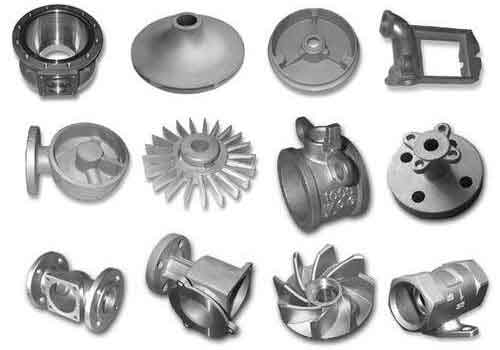Mouse-tail defects, characterized by irregular linear grooves on the lower surfaces of thick sand casting parts, are critical challenges in foundry processes. This article analyzes the formation mechanism of these defects through theoretical models and experimental validation, focusing on thermal expansion, vapor pressure dynamics, and moisture migration in green sand molds.
1. Thermodynamic Behavior of Sand Molds
During pouring, the interaction between molten metal and the mold surface generates rapid heat transfer. The temperature gradient across the mold wall creates distinct zones:
- Dry Sand Zone (D): 0.3–7 mm thick, formed due to moisture evaporation.
- Moisture Condensation Zone (M): Up to 10 mm thick, with 3–4% higher moisture content.
- Unsaturated Zone (U): Transitional region with intermediate moisture.
- Unaffected Zone (G): Retains original moisture and strength.

2. Force Analysis in Moisture Condensation Zone
The mouse-tail defect originates from unbalanced forces in the moisture condensation zone (M). Key forces include:
- Dry Zone Expansion Force (FD):
$$ F_D = \alpha \cdot \Delta T \cdot E \cdot A $$
where α = thermal expansion coefficient, ΔT = temperature difference, E = modulus of elasticity, and A = contact area. - Vapor Pressure (FS): Generated by moisture evaporation:
$$ F_S = P_{vapor} \cdot A $$ - Shear Resistance (FU, FJ, FQ): Opposing forces from adjacent zones.
| Temperature (°C) | Vapor Pressure (MPa) |
|---|---|
| 600 | 0.402 |
| 800 | 0.495 |
| 900 | 0.541 |
| 1,000 | 0.587 |
| 1,100 | 0.634 |
| 1,200 | 0.680 |
3. Critical Factors in Mouse-Tail Formation
Experimental data from HT150 castings (pouring temperature: 1,300°C) reveal key dependencies:
| Moisture (%) | Compactness (%) | Additives | Defect Count |
|---|---|---|---|
| 6 | 35 | None | 0 |
| 4 | 45 | None | 0 |
| 5 | 55 | Wood chips | 1 |
| 5.5 | 45 | Resin | 2 |
4. Mitigation Strategies for Sand Casting Parts
To minimize mouse-tail defects in sand casting parts:
- Reduce Moisture Content: Limits vapor pressure (FS) and weakens moisture condensation zones.
- Optimize Compactness: Balance mold strength and permeability using:
$$ \text{Optimal Permeability} = 70 – 160 \, (\text{depending on process}) $$ - Add Expansive Agents: Wood chips or coal dust (0.5–1.5%) reduce thermal stress.
5. Conclusion
Mouse-tail defects in sand casting parts arise from synergistic effects of thermal expansion, vapor pressure, and weakened moisture condensation zones. Controlling moisture (<4%), adjusting compactness, and incorporating additives effectively suppress defect formation. Future research should quantify zone-specific strength thresholds to refine predictive models.
